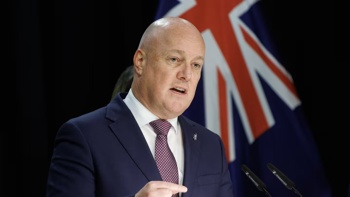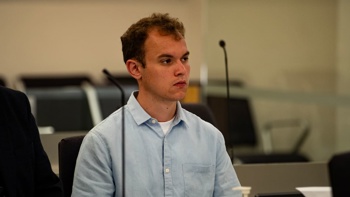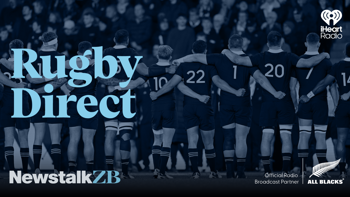The father of a rugby player who died with a condition linked to concussion has been told by WorkSafe that the agency doesn’t have the expertise to deal with potential brain damage caused by playing the game.
John Guyton said WorkSafe’s rejection of his plea that the workplace safety agency become involved was an abrogation of its responsibilities.
“It’s WorkSafe – it’s right in their field. I opened it up for conversation with them and they didn’t even want to have the conversation.”
Billy Guyton was the first New Zealand rugby player to be diagnosed with chronic traumatic encephalopathy, a condition believed to be linked to concussion that can only be diagnosed after death by studying the brain.
It’s a condition that can cause a loss of memory, poor judgment and impulse, aggression and depression, suicidal ideation and eventually dementia.
In Billy Guyton’s case, the diagnosis followed his suspected suicide in May 2023, aged 33, and the donation of his brain to the Neurological Foundation Human Brain Bank at the University of Auckland.
Following his son’s death, John Guyton wrote to Minister of Workplace Relations and Safety Brooke van Velden seeking WorkSafe’s intervention on the rugby pitch on the basis it was a workplace where players were being injured.
Billy Guyton had played for the Blues, Crusaders, Hurricanes and Maori All Blacks before his early retirement from rugby at age 28.
The request for help was linked to John Guyton’s view that Rugby NZ was not doing enough to protect players despite strong links – although still inconclusive – between CTE and head knocks through contact sport.

Billy Guyton while playing for Tasman, a year before he was forced to quit rugby. Photo / Photosport
In August, WorkSafe’s investigations manager Rob Pope told John Guyton that WorkSafe recognised professional athletes as “workers” who were covered by health and safety at work legislation.
But he said the law stated “businesses should know their work and workplace better than anyone else” which meant NZ Rugby was “best placed to understand and manage the specific risks to its professional athletes as it is primarily responsible for looking after its people”.
He said there was scope for WorkSafe to make inquiries into health and safety but “it would be difficult for us to progress beyond that due to the complexity of the issue and timing constraints”.
“Complex matters such as brain injuries and their long-term impacts can involve extensive consultation with experts and specialists, before we could determine whether WorkSafe can intervene.”
He said concussion-related issues were receiving greater attention and growing public awareness.
“However, the reality is WorkSafe does not have the resources or expertise to commit to an area which is not well understood and where there is no firm medical agreement on its causes.”
Pope told the Herald: “WorkSafe does not hold the necessary expertise to intervene in such a complex matter that requires long-term medical consultation, and so is not the most appropriate agency to do so.”
The Herald sought WorkSafe’s position beyond the Billy Guyton case and was told it had not engaged with NZ Rugby on the issue. It said its “recent strategic reset” meant it was focused on areas with the highest work-related harm which were agriculture, construction, forestry, and manufacturing.
A WorkSafe spokesperson said the law laid the responsibility with the employer operating the workplace and it was up to that employer to decide what it needed to do.
“If a person’s work directly resulted in harm, that could indicate an organisation failed to meet its duty of care – even if the harm didn’t manifest itself until sometime later.”
John Guyton said he worked as a builder with health and safety issues understood for each job he undertook before the work got underway.
“When you go to a build, the risks and dangers are pointed out to you.”
He said it was unclear whether professional rugby players had the same level of understanding when they took to the field. He said it wasn’t known whether the risk was spelled out in players’ contracts or if they were presented with research linking CTE to head knocks.
He said he considered it core business for WorkSafe and was disturbed to see complexity raised as a reason for the agency not to be involved.
“Is it too complex they don’t worry about it? Or do they only fight the fights they can win? It was gobsmacked by their response – it’s their duty.
“That’s what they’re there for, to deal with the hard stuff because us, as the public, can’t deal with it.”
NZ Rugby has developed an increasingly strict series of rules around concussion management including extended stand-down periods before playing again. It is also working with the health-focused New Zealand Rugby Foundation and the New Zealand Rugby Players’ Association on a “comprehensive and coordinated plan” on concussion and “head acceleration events”.
A major legal case against the National Football League in the United States has seen more than $1.5 billion paid out to more than 1600 former NFL players. In the United Kingdom, around 850 former rugby players are suing the sporting bodies that run the game there.
David Fisher is based in Northland and has worked as a journalist for more than 30 years, winning multiple journalism awards including being twice named Reporter of the Year and being selected as one of a small number of Wolfson Press Fellows to Wolfson College, Cambridge. He first joined the Herald in 2004.
Take your Radio, Podcasts and Music with you









